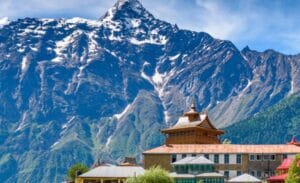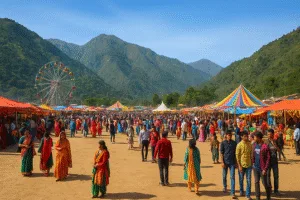Panch Kailash – A Complete Guide to the Abodes of Lord Shiva

Mohit Bangari
Explore Himalaya With Me!!
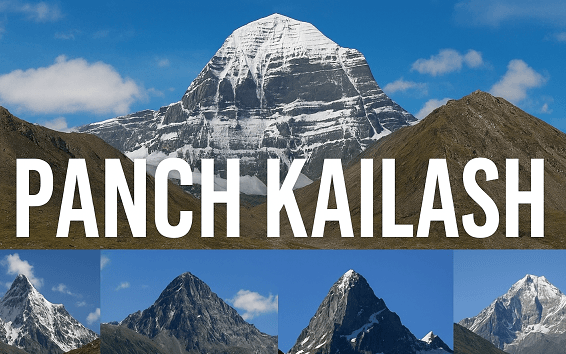
In Hindu tradition, Kailash is known as the divine abode of Lord Shiva and Goddess Parvati. Most people know only about Mount Kailash in Tibet, but there are actually five sacred Kailash peaks, collectively called Panch Kailash. These are Mount Kailash (Tibet), Adi Kailash (Uttarakhand), Kinnaur Kailash (Himachal Pradesh), Shrikhand Mahadev Kailash (Himachal Pradesh), and Manimahesh Kailash (Himachal Pradesh).
Table of Contents
I have already written detailed articles on each of these Panch Kailash yatras, and in this article, you will find their links mentioned ahead so that you can explore each Kailash in depth.
Significance of Panch Kailash
The Panch Kailash Yatra is one of the holiest journeys a devotee of Lord Shiva can undertake. Each Kailash represents a unique form of Mahadev and holds immense significance.
Spiritual importance: Darshan of Kailash is considered as good as visiting Kashi, Kedarnath, and Amarnath together. Pilgrims believe that completing the Panch Kailash Yatra leads to liberation (moksha).
Religious importance: Each Kailash is tied with Puranic stories. For example, Shrikhand Mahadev is linked with Parvati’s penance, while Manimahesh is connected to Shiva’s jewel (Mani). Mount Kailash itself is believed to be the axis of the universe, or Meru Parvat.
Cultural importance: These yatras are not just pilgrimages but community festivals. Local villagers host fairs, offer food to pilgrims, and keep age-old traditions alive.
Geographical importance: The Kailash peaks are not ordinary mountains. They are located in the most sacred Himalayan belts where mighty rivers originate, glaciers remain untouched, and valleys carry folk tales of Shiva.
Philosophical meaning: The five Kailash together symbolise the five faces of Lord Shiva – Sadyojata, Vamadeva, Tatpurusha, Aghora, and Ishana. This makes Panch Kailash Yatra not just a physical journey but a spiritual awakening.
Mount Kailash (Tibet)
Region: Tibet Autonomous Region, near Lake Mansarovar
Location (Coordinates): 31.0675° N, 81.3119° E
Elevation: 6,638 metres (21,778 ft)
Mount Kailash is the most sacred among all Kailash peaks. Considered as Lord Shiva’s real abode, it stands near Lake Mansarovar and Lake Rakshastal, two of the most holy lakes of Asia. It is also the origin of four major rivers: Indus, Sutlej, Brahmaputra, and Karnali.
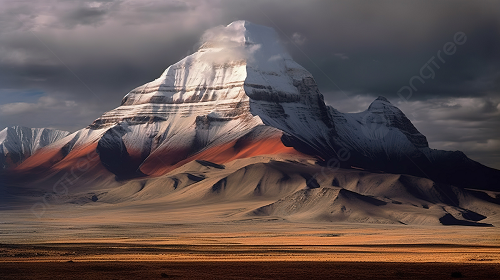
Mythological significance: It is said that Shiva sits here in eternal meditation. For Hindus, Buddhists, Jains, and Bonpos, this mountain is equally divine. The mountain is unclimbed till today, as climbing is considered a sin.
Pilgrimage: The Kailash Mansarovar Yatra involves a 52-km parikrama around the mountain. Pilgrims also take a holy dip in Lake Mansarovar. The Yatra is organised by the Indian government via Lipulekh (Uttarakhand) and Nathu La (Sikkim).
👉 Read more in my detailed article here: Click here
Adi Kailash (Uttarakhand)
Region: Kumaon Himalayas, Pithoragarh district, Uttarakhand
Location (Coordinates): 30.2028° N, 80.9089° E
Elevation: 6,191 metres (20,312 ft)
Adi Kailash, also known as Chhota Kailash, resembles Mount Kailash in shape and is considered its younger brother. It lies near the Indo-Tibetan border. Along with Adi Kailash, pilgrims also visit Om Parvat, where the natural snow pattern forms a perfect Om.
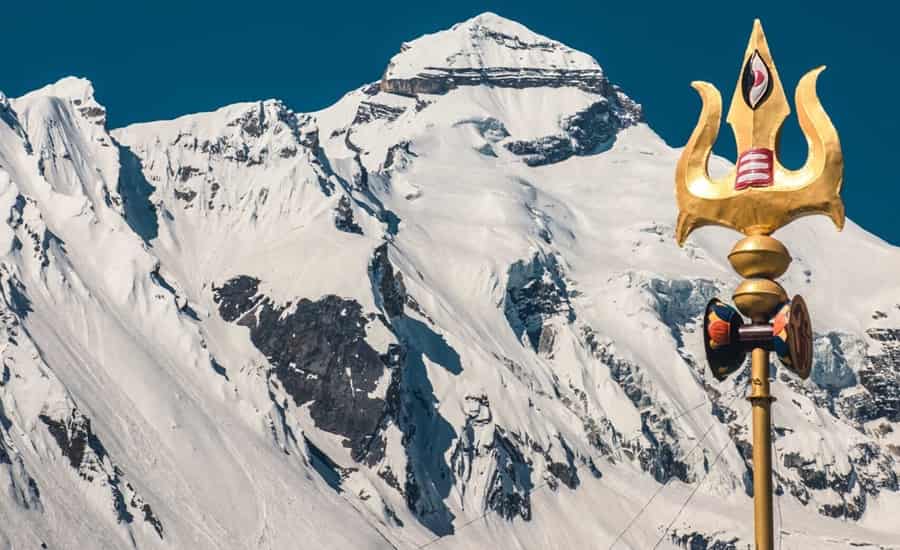
Mythological significance: According to local legends, Lord Shiva and Maa Parvati stayed here. The Pandavas are also believed to have passed through this region during their exile.
Pilgrimage: The Adi Kailash Yatra starts from Dharchula and passes through Gunji, Nabidhang, and Jolingkong. Pilgrims do darshan of Adi Kailash and Gauri Kund. Managed by KMVN, it is one of the most adventurous yatras.
👉 Read more in my detailed article here: Click here
Kinnaur Kailash (Himachal Pradesh)
Region: Kinnaur district, Himachal Pradesh
Location (Coordinates): 31.6167° N, 78.5500° E
Elevation: 6,050 metres (19,850 ft)
Kinnaur Kailash is famous for its vertical rock formation known as Shivling, which is around 79 ft tall and changes colour throughout the day. Both Hindus and Buddhists of Kinnaur worship this mountain.
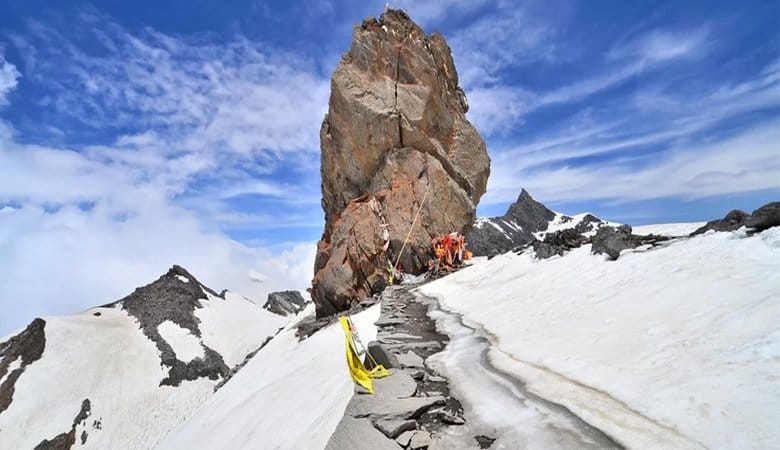
Mythological significance: It is believed that Lord Shiva held meetings with other deities here. Locals consider the Shivling at the top as a living form of Mahadev.
Pilgrimage: The Kinnaur Kailash Yatra is a 2-3 day trek starting from Tangling village. Devotees perform parikrama around the holy Shivling. The trek is considered challenging but spiritually rewarding.
👉 Read more in my detailed article here: Click here
Shrikhand Mahadev Kailash (Himachal Pradesh)
Region: Kullu district, Himachal Pradesh
Location (Coordinates): 31.7833° N, 77.4667° E
Elevation: 5,227 metres (17,150 ft)
Shrikhand Mahadev is one of the most difficult Kailash yatras. The trek covers steep climbs, glaciers, and rocky terrains. At the summit, a massive 75 ft tall Shivling naturally stands as the symbol of Mahadev.
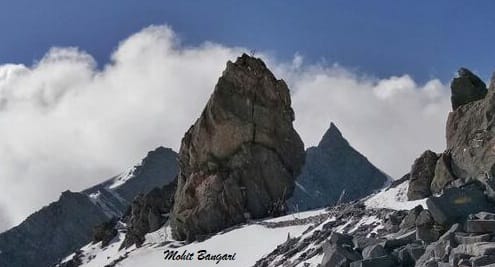
Mythological significance: It is believed that Maa Parvati performed penance here to please Shiva. Some legends also say Ravana meditated here and got divine powers.
Pilgrimage: The yatra begins from Jaon village. Every year in July, thousands of devotees join the Shrikhand Mahadev Yatra, organised by local authorities.
👉 Read more in my detailed article here: Click here
Manimahesh Kailash (Himachal Pradesh)
Region: Chamba district, Himachal Pradesh
Location (Coordinates): 32.4333° N, 76.6167° E
Elevation: 5,653 metres (18,547 ft)
Manimahesh Kailash is located near the sacred Manimahesh Lake. The reflection of the Kailash peak in the lake is a breathtaking view.
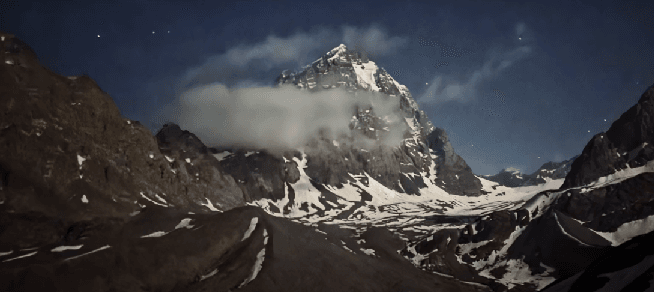
Mythological significance: According to legend, Shiva created Manimahesh Lake after his marriage with Parvati. The name Manimahesh means “Jewel of Shiva.”
Pilgrimage: The Manimahesh Yatra is held in August-September, starting from Hadsar village. On Janmashtami and Radha Ashtami, thousands of pilgrims take a dip in the lake to seek blessings.
👉 Read more in my detailed article here: Click here
Best Time to Visit Panch Kailash
Mount Kailash Mansarovar: May to September
Adi Kailash: May to October
Kinnaur Kailash: July to September
Shrikhand Mahadev: July to mid-August
Manimahesh Kailash: August to September
Conclusion
The Panch Kailash Yatra is a divine journey that connects a devotee directly with Lord Shiva. Each Kailash has its own story, beauty, and spiritual test. Together, they form the five faces of Mahadev, making them the holiest pilgrimages of the Himalayas.
If you are a true Shiva bhakt and a lover of the Himalayas, you must at least once in life try to complete the Panch Kailash Darshan. The blessings received here are beyond words.
Related Reads To Lord Shiva
Kailash Mansarovar Yatra via Kumaon Corridor resumes in 2025 – All You Need to Know
The historic Kailash Mansarovar Yatra via Kumaon corridor is resuming in 2025 after years of suspension. This route through Uttarakhand is the oldest Indian path to reach Tibet’s Mount Kailash and Mansarovar Lake. In this article, I have explained the corridor’s importance, its reopening updates, facilities, and how it benefits pilgrims. You will also find travel tips and government announcements for yatris.
👉 Click here
Bijli Mahadev – The Temple of Lightning in Himachal Pradesh
Bijli Mahadev Temple, located near Kullu in Himachal Pradesh, is one of the most unique Shiva temples in India. The temple is famous because lightning strikes the Shivling here every 12 years, shattering it into pieces, and the priest restores it using butter and sattoo. I have covered its mythological background, trek route, and local traditions. If you are planning to visit Himachal, this temple is a must.
👉 Click here
Kinnaur Kailash vs Adi Kailash – Which One to Visit?
Both Kinnaur Kailash in Himachal and Adi Kailash in Uttarakhand are important Shiva abodes, but devotees often get confused about which yatra to attempt. In this article, I have compared both peaks on the basis of location, trekking difficulty, spiritual importance, routes, and best time to visit. If you are planning your Kailash journey and want a clear idea which one suits you, do check this comparison.
👉 Click here
Madmaheshwar Trek – A Spiritual Journey to the Heart of the Himalayas
The Madmaheshwar Temple in Uttarakhand is one of the Panch Kedar temples, deeply linked with Lord Shiva. Surrounded by snow-capped peaks, the temple lies at the end of a scenic trek from Ransi village. In my article, I have shared the temple’s mythological background, trek details, night halts, and the divine aura of this hidden gem. It is a must-do trek for both Shiva devotees and nature lovers.
👉 Click here
FAQs (Panch Kailash)
Q1. What are the five Kailash peaks of Panch Kailash?
The five Kailash peaks are Mount Kailash (Tibet), Adi Kailash (Uttarakhand), Kinnaur Kailash (Himachal Pradesh), Shrikhand Mahadev Kailash (Himachal Pradesh), and Manimahesh Kailash (Himachal Pradesh).
Q2. Why is Panch Kailash Yatra considered so special?
Because each Kailash represents a form of Lord Shiva. Completing Panch Kailash Yatra is said to give blessings equal to doing thousands of other pilgrimages and leads towards moksha.
Q3. Which is the toughest Kailash Yatra?
The Shrikhand Mahadev Yatra is the toughest among Panch Kailash. It involves very steep climbs, glaciers, and rocky terrains at high altitude.
Q4. Can Mount Kailash be climbed?
No, climbing Mount Kailash is strictly prohibited. It is considered a grave sin as the mountain is worshipped as the home of Lord Shiva and Parvati.
Q5. What is the best time to visit Panch Kailash?
Mount Kailash Mansarovar: May to September
Adi Kailash: May to October
Kinnaur Kailash: July to September
Shrikhand Mahadev: July to mid-August
Manimahesh Kailash: August to September
Q6. Do I need special permission for these yatras?
Yes, for Mount Kailash in Tibet you need special permits from both India and China. For Adi Kailash, registration is done through KMVN (Kumaon Mandal Vikas Nigam). For Kinnaur, Shrikhand, and Manimahesh yatras, local administration and temple committees manage the permissions.
Q7. Which Kailash is easiest to visit?
Manimahesh Kailash is considered the easiest among Panch Kailash. The trek from Hadsar to the lake is around 13 km and is done by thousands of devotees every year.
Q8. What should I carry for Panch Kailash Yatra?
Carry warm clothes, good trekking shoes, raincoat, medicines, ID proofs, torch, power bank, and dry snacks. Always keep cash as ATMs and network are limited.
Q9. How many days are needed to complete Panch Kailash Yatra?
Each Kailash yatra takes 5 to 15 days depending on the route. Completing all Panch Kailash in one go is not possible, so devotees usually attempt them in different years.
Q10. Is Panch Kailash Yatra safe for senior citizens?
It depends on health and fitness. Manimahesh Kailash and Adi Kailash (by vehicle till Gunji) are relatively easier. But for Shrikhand Mahadev, Kinnaur Kailash, and Mount Kailash Parikrama, high fitness is required. Always consult a doctor before planning.
–
Mohit Bangari
Related Post


Mohit Bangari
Explore Himalaya With Me!!


Explore the beauty and cultures of the Himalayas, from Jammu and Kashmir to Arunachal Pradesh, Tibet and Nepal. My blog shares stories, pictures, and fun articles about this amazing region. Come along on a journey where each mountain has a tale and every valley hides a treasure. Join me as I discover the magic of the mountains together.
Welcome to my Himalayan Adventure!


